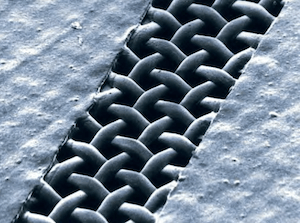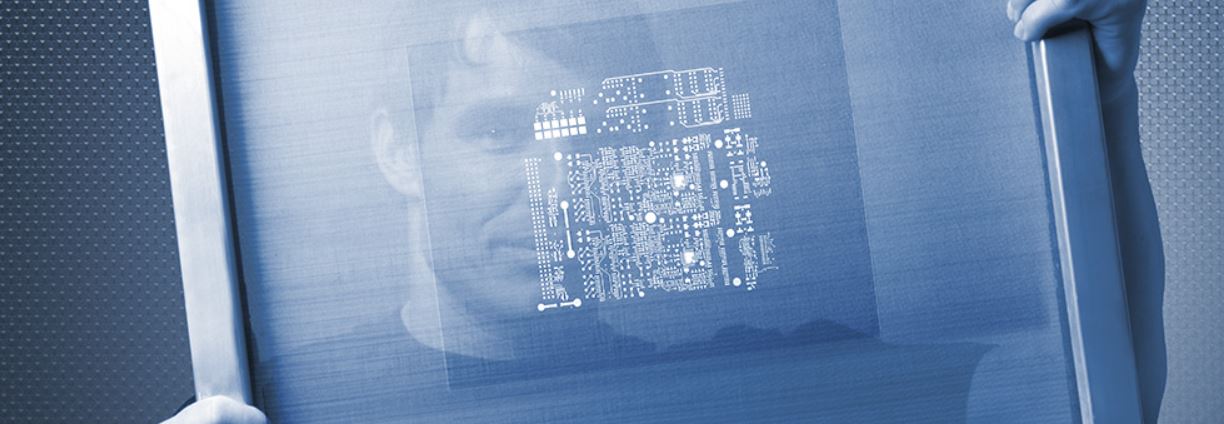Understanding the Five Core Screen Printing Techniques
Starting as a way to produce eye-catching poster ads and packaging, screen printing has evolved into a critical printing method. In fact, its uses range from t-shirt graphics to logos on glass beer bottles to circuits that make printed circuit boards execute various functions.
While the concept of screen printing has remained the same over the years, the ways it is carried out have advanced to meet consumer demand. So what are the prominent screen printing methods used today?
W.S. Tyler has over 140 years of woven wire mesh experience and has a team dedicated to helping various screen printing operations maximize production capabilities with wire mesh. As a result, we have encountered screen printing methods of all kinds, and we feel confident we have the most popular methods narrowed down.
With that, we wrote the following article to share what we know about the top screen printing techniques and will be covering:
- What screen printing is
- What woven wire mesh is
- The top screen printing methods
- How woven wire mesh influences the screen printing process
What Is Screen Printing?

Screen printing is a centuries-old ink transferring process that involves using a special epoxy to block off a specific design on screening media, such as woven wire mesh. Screen printing mesh is then saturated with ink until it seeps through the exposed pore openings to bleed onto a surface to depict a particular design.
What Is Woven Wire Mesh?

In the world of screen printing, woven wire mesh is a series of individual metallic wires woven together on a specialized weaving loom to form a screen printing mesh with rigid pore openings. To ensure maximum performance, parameters such as the mesh count, wire diameter, and alloy are calculated before implementation.
What Are the Different Screen Printing Methods?
While the applications of screen printing have grown dramatically, the need to speed up the process has grown as well. That said, there are five prominent screen printing techniques used today:
- The flatbed method
- The stationary cylinder method
- The cylinder method
- The cylindrical textile method
- The roll-to-roll method
Flatbed Method
The flatbed method is a very basic form of screen printing. It places the substrate beneath woven wire mesh that is stretched within a frame.
As stated above, this mesh is essentially a stencil as a special epoxy is used to mask off specific areas, creating a design.
During the screen printing process, the mesh is pressed firmly against the substrate, and the exposed mesh openings are flooded with ink. A squeegee is then pushed on top of the mesh from one side of the frame and dragged to the other.
As a result, the ink is squeezed through the mesh openings and adheres to the substrate.
Stationary Cylinder Method
With the stationary cylindrical method, the squeegee does not move. Instead, a cylindrical container that is being printed on, such as a water bottle or coffee mug, rotates.
While the container rotates, the woven wire mesh screen moves horizontally in the same direction. As the mesh is pinched between the stationary squeegee and rotating container, these motions work in conjunction to ensure the design is accurately transferred onto the right amount of surface area of the container.
Cylinder Method
The cylinder method resembles the stationary cylinder method in the fact that the squeegee remains static during printing. But unlike the stationary cylinder process, so does the mesh, and the frame remains stationary as well.
To transfer ink, a cylindrical mechanism rotates counterclockwise to pull a substrate, typically some sort of sticker. The substrate is then wedged between the mesh and the cylindrical mechanism.
While the substrate is being pulled, the mesh frame moves the mesh from right to left. As the ink is flooded on the right side, the squeegee forces the ink through the mesh and onto the substrate.
The dual motion of the cylindrical mechanism and frame, all the design to be accurately depicted onto the substrate.
Cylindrical Textile Method
The cylindrical textile method places a stationary squeegee in a large rotating drum. The ink being transferred is also stored in the drum.
During screen printing, the substrate moves from left to right as the drum rotates counterclockwise.
Now, there are several woven wire stencils on the rotating cylinder. As the cylinder rotates over the moving substrate, the squeegee forces ink through mesh stencils, creating a continuous operation.
Much like the other listed screen printing methods, because the substrate motion and cylindrical rotations move at the same pace, the design is transferred evenly and consistently.
Roll-To-Roll Method
The roll-to-roll method follows a similar concept as the cylindrical textile method as it employs a rotating drum that contains ink and a stationary squeegee. The biggest difference is that it also uses two substrate master rollers: one that feeds substrate and one that collects the printed substrate.
Again the substrate is projected from left to right while the rotating cylinder rotates counterclockwise. As the substrate is projected under the rotating cylinder, the squeegee forces ink through wire mesh stencils located throughout the cylinder, transferring the design onto the substrate.
This makes for a continuous process typically used when producing stickers, such as the hazard stickers on various packaging.
How Does Woven Wire Screen Printing Mesh Effect The Screen Printing Process?
Woven wire mesh screens go hand in hand with several aspects of the screen printing process. It is proven to influence the following:
- The printability of fine details and half-tone dots
- Stencil system support
- Ink flow
- Print speeds
- Ink deposit thickness
- Opacity
- Ink consumption
- Drying time
- Registration capability
What makes woven wire mesh a widely used screening media are the mesh openings. These openings help control both the flow and distribution of ink to ensure even and consistent prints.
Now, when using wire mesh, it is important that your mesh specifications feature mesh openings that are three to five times larger than the largest pigments in your ink. This is because having mesh openings that are too small will affect the ink's ability to flow through the mesh.
The thickness of the mesh also affects the screen print process. More specifically, the thickness of the mesh influences the ink volume and ink deposit.
To control the thickness of the mesh caused by the knuckles at each wire cross-section, screening printing mesh is often calendered. This means the mesh is flattened using heat and pressure.
As a result, the mesh screen receives a flat, uniform surface, the openings become more stable, and the wear the squeegee is subjected to is reduced.
Knowing What Mesh Counts Work is Key
Screen printing is a process in which ink is passed through woven wire mesh stencils in an effort to transfer a desired design on a designated surface. To create the circuit boards and beer bottle logs we encounter every day, odds are manufacturers use one of the five prominent screen printing techniques during production.
These techniques are the flatbed method, the stationary cylinder method, the cylinder method, the cylindrical textile method, and the roll-to-roll method.
At the end of the day, no matter what you are screen printing, the mesh count you use plays a significant role in how accurate your prints are. While it is common knowledge that the more detail you want to incorporate, the finer your mesh should be, there are a handful of factors that must be considered when determining the mesh count that is right for you.
Here at W.S. Tyler, we know woven wire mesh. From the mesh count to the alloy and everything in between, we are prepared to work with you and your team to find a solution that delivers a product you can proudly stand behind.
For this reason, we have developed the following article to inform you of everything you should consider when calculating what mesh count(s) will work best for you:
About Ronnie Brown
Ronnie is the Content Writer for W.S. Tyler and has four years of experience as a professional writer. He strives to expand his knowledge on all things particle analysis and woven wire mesh to leverage his exceptional writing and graphic design skills, creating a one-of-a-kind experience for customers.



